Willow Wildthing and the Swamp Monster Chapters 7,8 and 9
Illustrated by Rebecca Bagley
Written and read by Gill Lewis
Chapter 7 Valley of the Killer Plants
Chapter 8 Monster Slayer
https://youtu.be/mQbXxQOHuoM
Chapter 9 Willo’-the-Wisp
Willow Wildthing and the Swamp Monster Chapters 7,8 and 9
Illustrated by Rebecca Bagley
Written and read by Gill Lewis
Chapter 7 Valley of the Killer Plants
Chapter 8 Monster Slayer
https://youtu.be/mQbXxQOHuoM
Chapter 9 Willo’-the-Wisp
Welcome to my tree house, make a den, grab a cup of hot chocolate and please join me for three more chapters of Willow Wildthing and the Swamp Monster.
Join Willow as she enters the Wilderness for the first time.
Chapter 4 Outsiders https://youtu.be/oFK7NpzQU9I
Chapter 5 River Camp https://youtu.be/obplWfVrZwI
Chapter 6 The Witch’s Lair https://youtu.be/j7UvwT5eFC0
Hello folks…I’ll be doing a reading of Willow Wild Thing and the Swamp Monster
Three chapters a day told over five days.
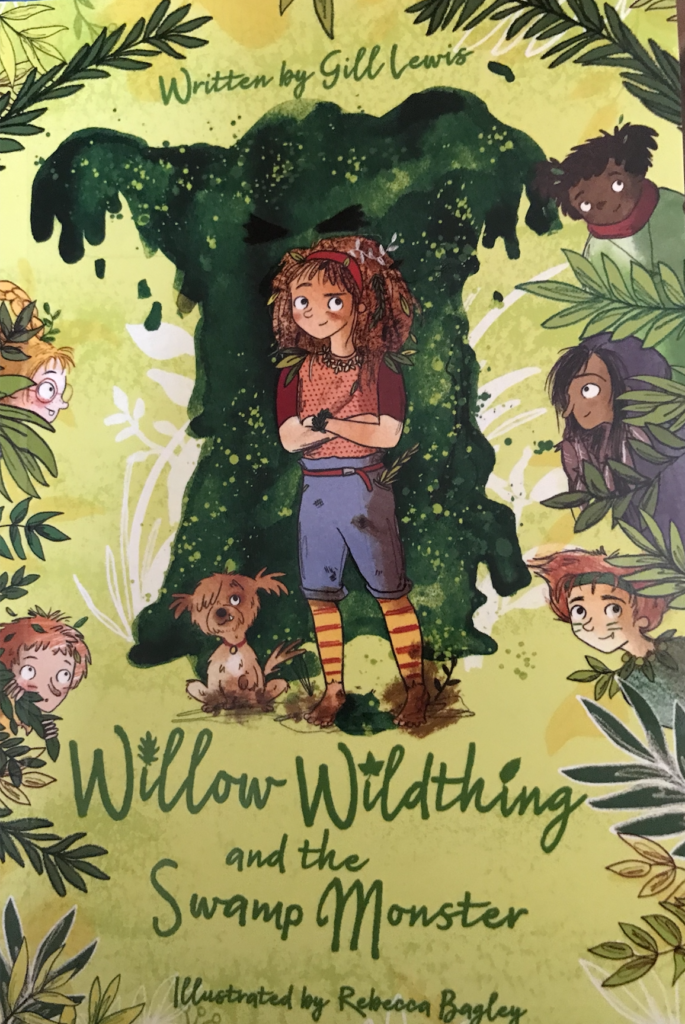
Quick blurb:
When Willow meets the Wild Things, she knows life is never going to be the same again.
Strange things happen in the Wilderness. It holds more than you could possibly imagine: secrets, shadows, even a witch.
Are you brave enough to come? Because the moment you step across the boundary, you’ll be changed forever.
Illustrated by Rebecca Bagley
Written and read by me. 🙂
So grab a mug of hot chocolate, make a den and get ready for a story…
Chapter 1
Chapter 2
Chapter 3
If you are searching for some home bookish resources, the Booktrust have some great ones;
The publication of a new book is time to party after months, maybe years of hard book. It’s wonderful to hold that book in your hand and share at bookshop signings, author visits and promotional book tours.
So now, as many authors with book releases can’t get out and about, I thought I’d shout out some new releases on here.
I think many readers and parents at home may be looking for books to enjoy through this period of social distancing.
So today’s shout out is to Catherine Barr’s Invisible Nature, illustrated by Anne Wilson.
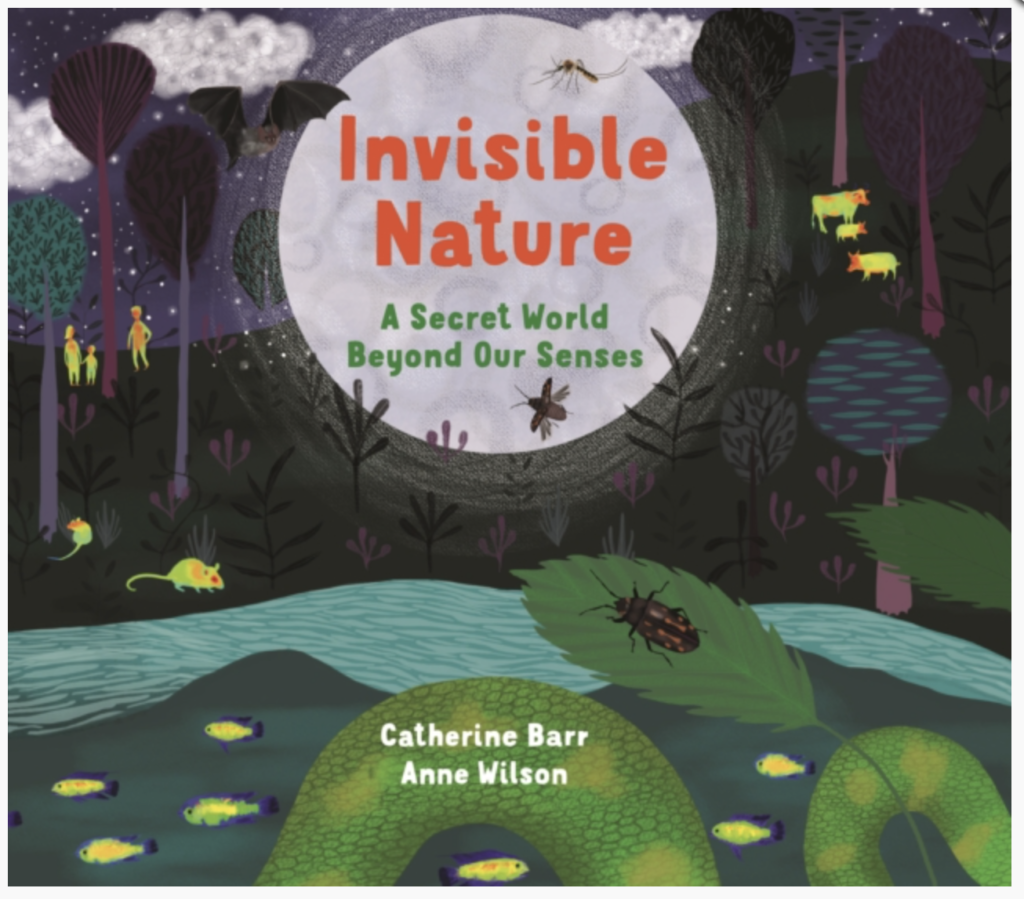
A little bit about the book:
There are sounds no human ear can hear, scents no-one can smell, colours our eyes cannot detect, waves of radiation that pass right through us without our noticing, but known and used by many different animal species.
They have dangers as well as uses, but are vital to all life on Earth.
This fascinating unseen and secret world is revealed in Catherine Barr’s latest book. Fourteen colourful spreads display the impact on human and animal life of microwaves; ultra-violet and infra-red light; electromagnetic waves; ultrasound and infrasound and scents and smells beyond human detection.
Catherine has five fabulous non-fiction books coming out in March and April: check them all out here https://www.unitedagents.co.uk/catherine-barr
Remember to buy from your indie bookshops who will need our support. Many are happy to post or deliver in clean paper bags.
Spread a little book love.
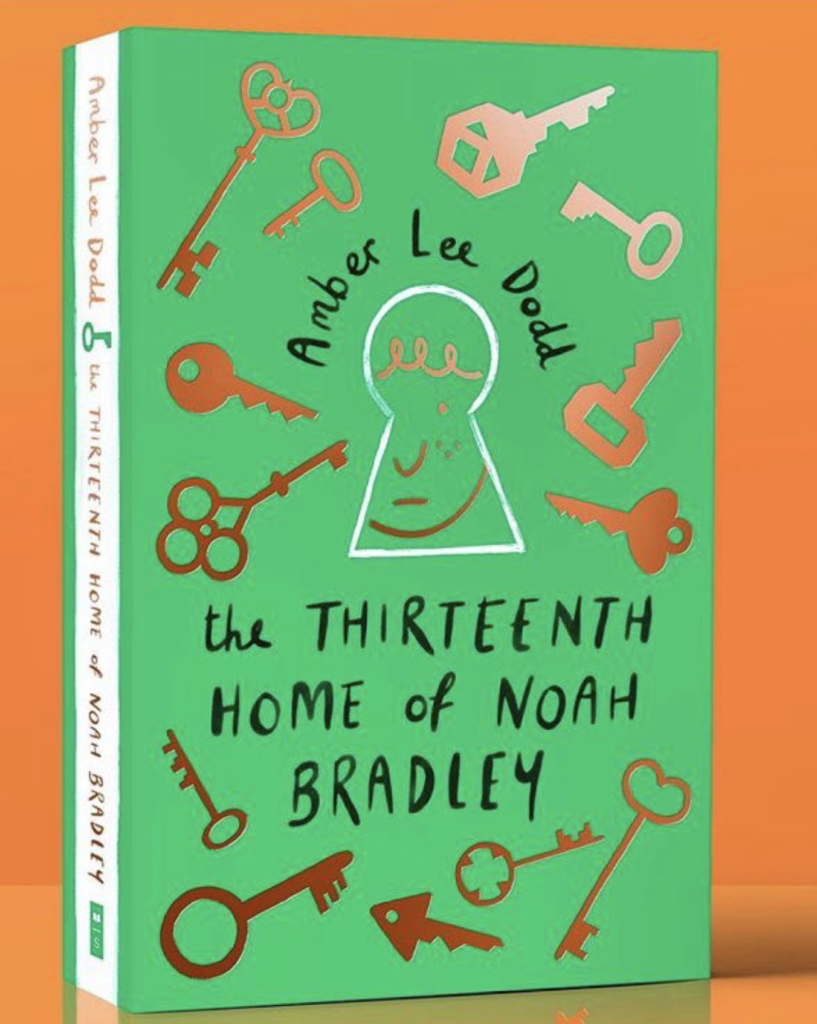
The publication of a new book is time to party after months, maybe years of hard book. It’s wonderful to hold that book in your hand and share at bookshop signings, author visits and promotional book tours.
So now, as many authors with book releases can’t get out and about, I thought I’d shout out some new releases on here.
I think many readers and parents at home may be looking for books to enjoy through this period of social distancing.
So first up is a new book, published April 2nd. The Thirteen Home of Noah Bradley, written by Amber Lee Dodd, cover by Jamie Gregory.
What’s it about…
Moving house is no fun. And no one knows that better than Noah Bradley.
A curse has forced his family to move thirteen times. Whether it’s a typhoon, a flash flood or a flock of persistent birds, the curse always wins. Now, the Bradley family have just moved into their thirteenth home.
Noah loves everything about it. He has his own room. He’s made friends at school. He’s happy. So when the curse returns, Noah decides that this time, there will be no more running away.
The Bradleys are staying put… no matter what it takes.
When ordering books, find out your nearest indie bookshop and order the book from them….it will help brilliant bookshops through these tough times. Many indie bookshops are posting and hand delivering books in clean paper bags.
Spread a little book love x
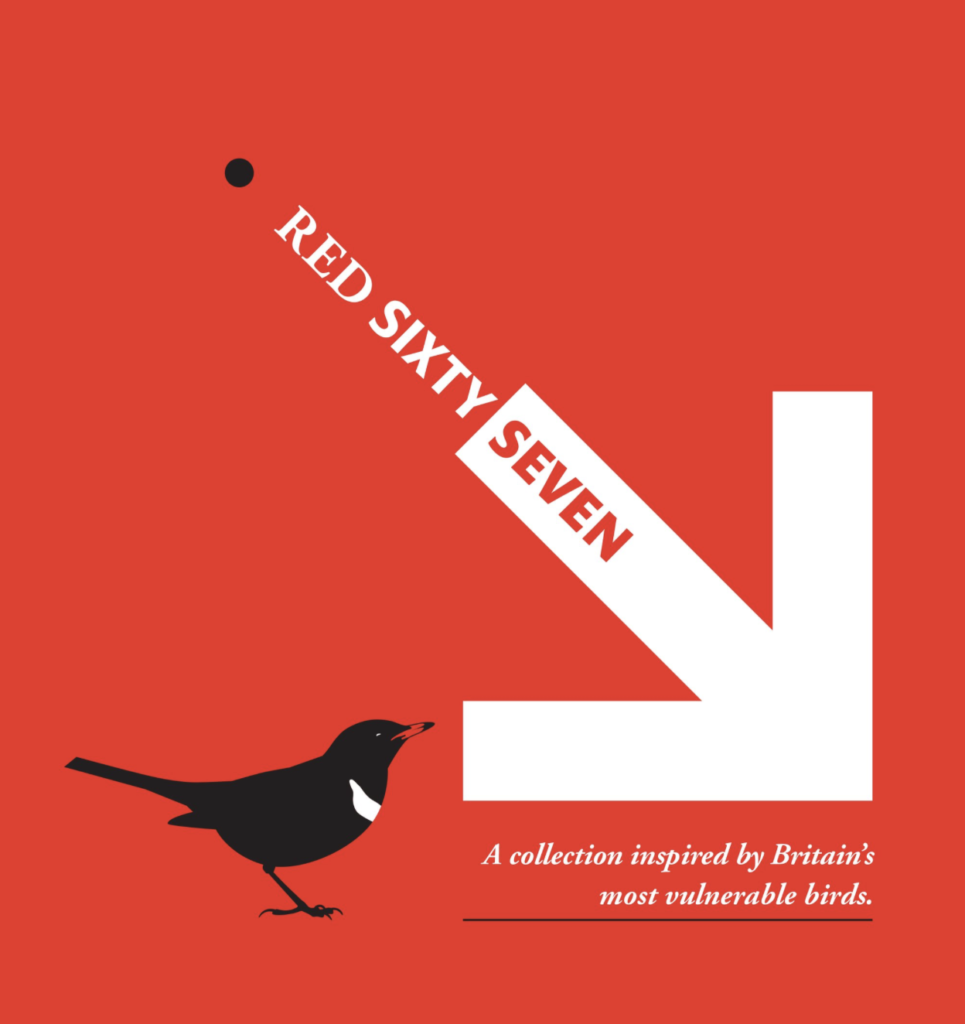
Red 67
I was really honoured to be invited to contribute to the extraordinary book; Red 67.
As the blurb says, this book shouldn’t exist. It does because the 67 birds depicted in this book are on the UK Red List. One in four UK bird species are under significant threat. Birds we consider common, like the House Sparrow, Starling and Herring Gull are more vulnerable than ever before.
So Red 67 was the idea of Kit Jewitt, to bring 67 writers and 67 artists together to create an illustrated book, the result being 67 love letters to our most vulnerable species from a wide variety of writers, and the birds illustrated by some of the best wildlife artists around, showcasing a range of styles.
Every penny from the sales is donated to help conservation projects run by the BTO and RSPB.
I decided to write about the White-fronted Goose.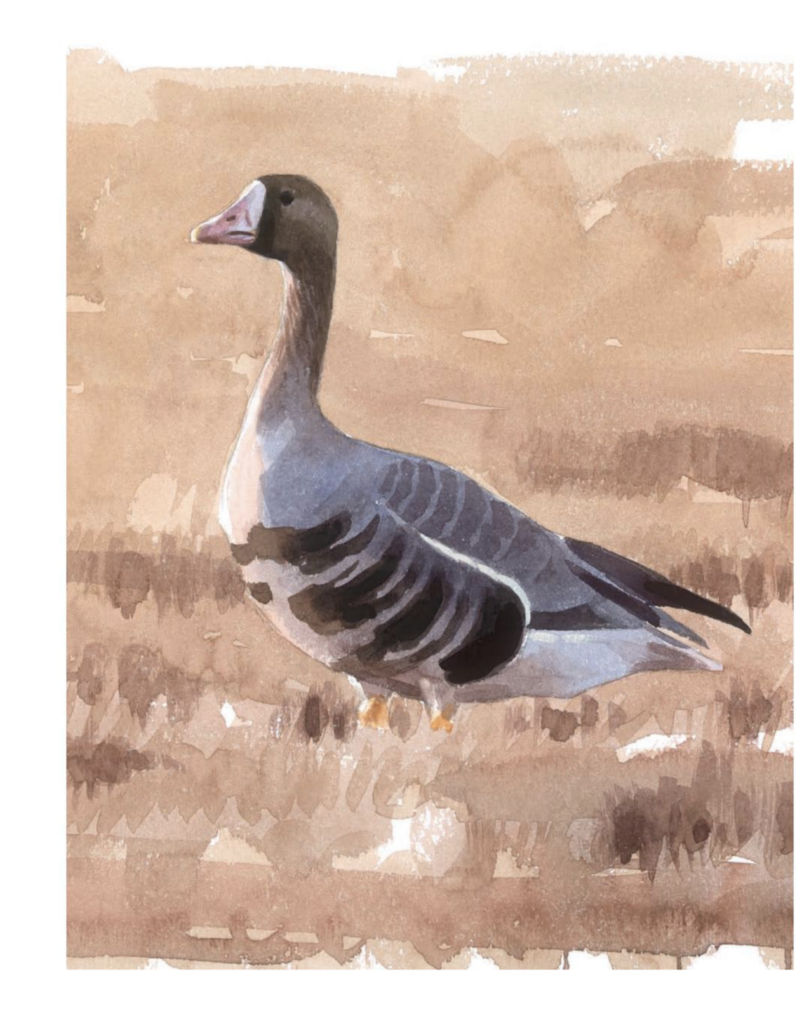

I’ve always loved wild geese. They usually come with the seasons and remind us the world is still turning. I love seeing flocks of birds together, arriving from a far-off lands coming back to the same place they have done for thousands of years.
But what about the White-fronted Goose? How much did I know about them? I’ve seen them only fleetingly before. I chose to concentrate on the Greenland White-fronted Goose, a subspecies of the White-fronted Goose, perhaps feeling a connection as I had travelled to Greenland many years ago. And the more I researched I realised how little is actually known about them, in part because their breeding habitat is so remote in the west of Greenland.
Their numbers crashed due to hunting, but then a hunting ban was brought in and their numbers began to rise. But then in the 80s their numbers have been steadily tumbling downwards. This is thought to be due to a number of factors including loss of habitat and climate change affecting their breeding grounds. When these geese moult they become flightless for a time with their chicks. In some areas of Greenland it is thought that the water melts faster, cutting off feeding grounds with fast rivers and in some area there is more snow, preventing growth of vegetation to eat.
I then read that these birds diverged from another goose species and evolved as a separate species some 2.5 million years ago.
2.5 million years!
It made me think of all those years…all those revolutions around the sun…all the different glacial periods which happened slowly enabling the geese to adapt. This bird’s story was told in deep time, in slow time. Yet, in the blink of an eye, they could be gone, without enough time to adapt to our rapidly changing climate.
So when I tried to write a piece, I didn’t know what to write. Where do you start? But I suppose I’m a story teller, and so I wrote their story…and to begin, I thought, what are the essential common denominators of a bird…and it starts like this…
She is feather, blood and bone.
You can read my piece if you click on the website. My piece is the first in the sample.
But I’d advise you to buy the book and discover wonderful writers and artists, find new ways to appreciate these remarkable birds and most importantly help directly with their conservation.
If there was a prize for the worst blogger then I would surely be on the podium.
People automatically assume that if you’re a writer, that you love writing. Well, for me the writing is the hard part of being an author. I love the thinking part where ideas go off inside my head like fireworks but having to sit down and actually try to find and form words is the hard part.
But I’m excited to tell you about a new book of mine, gorgeously illustrated by Rebecca Bagley.
Willow Wildthing and the Swamp Monster
It’s the first book in a series of four books about a girl called Willow who is drawn into a scrubby patch of urban woodland when her dog is dognapped by strange creature-like children. It’s a story reminiscent of my childhood when I played with friends in a scrubby patch of woodland. The imaginary world blurred with the real world and we had many adventures befriending dragons and climbing trees and making dens.
Writing the story made me wonder about wild space and if children today have access to a place where they can play unsupervised and unstructured. For me, it was vital space to simply just be, and wonder at the world, to test physical boundaries, to make and break friends and make them again. Unstructured play does not test or compare, the rules are invented by children and constantly change. There are infinite scenarios, and multiple outcome of games can be explored. Children can just be children.
So I was also pondering this whilst reading about the likely school closures associated with coronavirus.
These are strange and anxious times for many.
Coronavirus is the biggest thing in the news. Rightly so, we need to be aware and concerned and follow the science. We need to slow and delay the spread of the virus by social distancing, avoiding non-essential travel, and by thorough handwashing. Hopefully, this way, the more vulnerable people to the disease will be protected.
Now, I’m not downplaying the concerns about this virus at all, but I’m trying to see silver linings in situations. Climate change is a much, much bigger threat to our society than coronavirus, but it sometimes seems too big to deal with. But if we can change our behaviours for a more imminent threat like a virus, then surely, we can change them for a better, cleaner future too.
Already we know that air pollution reduced dramatically in Wuhan during the enforced lockdown. We are now having to change our behaviour; reducing travel, staying closer to home.
So, maybe this is a time to re-evaluate our lifestyles to benefit our own lives and the environment.
Maybe this is the time to really look at the way we live and try to assess things that might give us anxiety in modern life and try to change the things we can.
Work-life: How many work meetings could be done via the internet instead of long-distance travel? Could local produce and indie shops thrive? Will it be easier to ‘switch-off’ from work and go out for a walk in the evening or meet up with friends? Will we value our time away from work more?
Home-life: Will staying closer to home help us to notice our own environment and the natural world and make us more engaged with protecting it? Will we become more community minded? Will we become less lonely?
Education: I think parents might worry about children missing out on schoolwork. I personally think the over-testing of children and expectations thrust upon them contribute greatly to increased anxiety and depression in young people.
I don’t think 4-8 weeks of missed schooling, especially for primary school age is neither here nor there in the grand scheme of things. (I realise the bigger problem is the knock-on effects of working parents having to stop or rearrange work.)
But maybe this is a chance to take the pressure off children for a while…to stop continual testing. Take the lid off the pressure cooker! To find other ways to fill curious minds.
Maybe this is the chance to re-connect with our children and also the natural world;
To read books together and go on amazing book adventures and not fret about forcing phonics. (A child that is read to regularly will develop a love of reading more than a child pushed to work out the phonics of words). Go and have mini wild adventures in your local park, or if you have chance go out to hills or woods or beaches near you. Be messy and creative with paints and mud and food!
Childhood goes by in the blink of an eye.
Be silly together. Be serious together. Be together.
And give them chance to go out and play, and explore the wild, like Willow and her friends.
I dedicated Willow Wildthing and the Swamp Monster to Vernon, an oak tree. Vernon is symbolic of the trees under threat in urban landscapes and the brave people who know that we must save these wild beings and put them above and beyond unjust and unethical laws that see to destroy our future heritage.
Be wild, be strong, protect our future.
Be like Vernon. 🙂
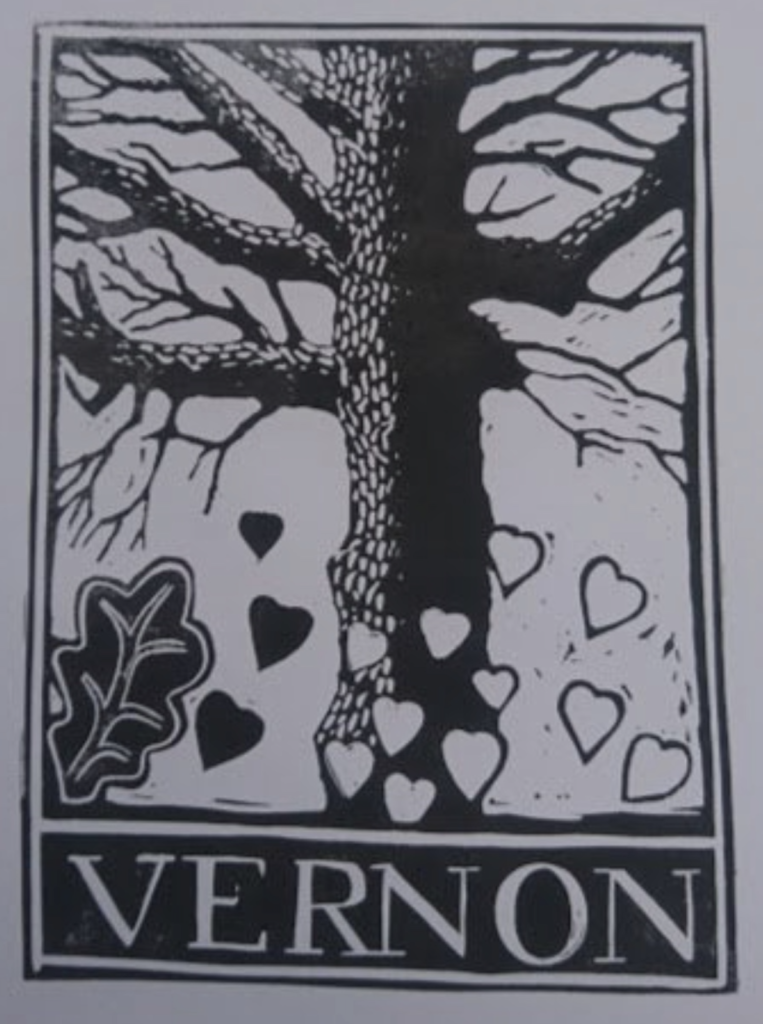
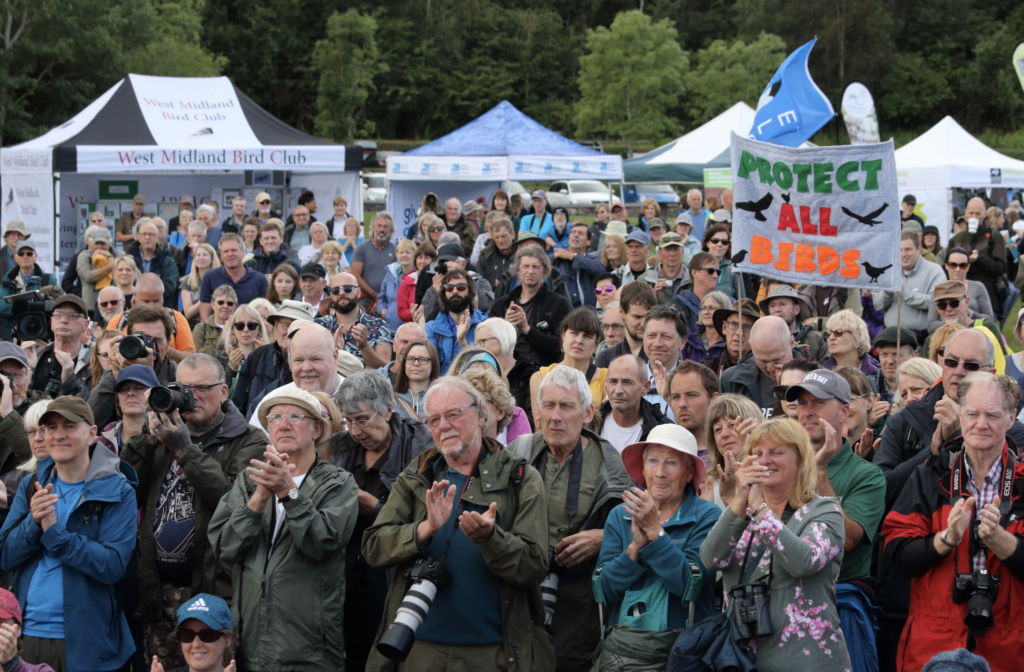
Hen Harrier Day at Carsington Water in the Peak District on the 11th August saw over 1500 people gather to celebrate the Hen Harrier and campaign to see more Hen Harriers in our skies.
So what is Hen Harrier Day all about?
Well, for people new to the issues around Hen Harriers, here’s a little summary:
Fact: Driven grouse shooting is wholly underpinned by wildlife crime.
Hen Harriers are a symbol of the widespread illegal killing of birds of prey and the intensive damaging management of our upland landscape associated with driven grouse moor across the UK.
And it has to stop.
Here is a petition to sign here.
If you want to know a bit more before you sign, read on…
What is a Hen Harrier?
Hen Harriers are extraordinary birds of prey often known as skydancers for their aerial display of roller-coaster flight. They are rare in the UK.
Why are Hen Harriers rare in the UK?
There should be more than 300 breeding pairs across England alone, but in 2018 there were only nine successful nests.
The core reason for this is because they are illegally shot, trapped and poisoned by those in the driven game shooting industry. A study of satellite tagged Hen Harriers shows that 72% of them are likely to have been killed over land associated with driven grouse moor.
This is a Hen Harrier that has been illegally killed and a report about it here.

It is not just Hen Harriers that are illegally killed.
Other birds of prey are illegally killed too. A recent Scottish Natural Heritage Report showed that satellite tagged eagles are more likely to ‘disappear’ over land associated with driven grouse moor. Driven grouse shooting is responsible for the demise of the Golden Eagle and its inability to recover as a breeding bird across Scotland.
This is an image of a golden eagle with a foot trapped in a Fenn trap. Clearly whoever laid this trap did not intend the bird to fly away. This bird is likely to be dead by now having suffered a long and lingering death. A report about it here
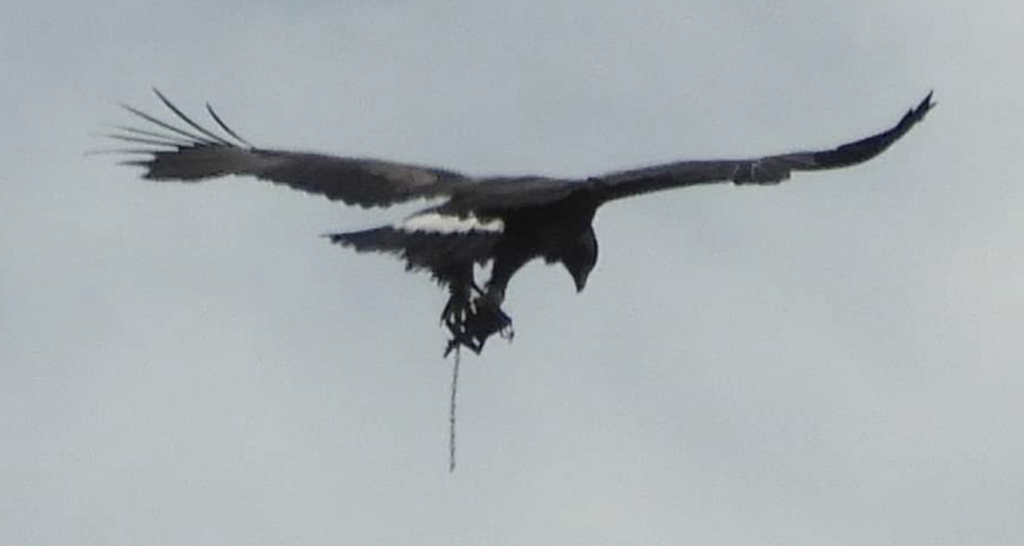
What is Driven Grouse Shooting?
Driven Grouse Shooting is a ‘sport’ that gained popularity in Victorian times. Vast areas of upland are burned to produce heather for the production of red grouse. This is an intensive land use. Grouse are produced in unnaturally high numbers and as a consequence they suffer disease and need to be medicated. Driven grouse shooting involves a line of people (called beaters) who walk in a line to drive the grouse toward the waiting people (called guns) who sit in round structures called shooting butts. The guns then shoot as many grouse as they can. A group of 8 guns can pay up to £35,000 for a day’s shooting.
Because the high numbers of grouse produced, many predators are legally killed (including foxes, stoats, weasels and crows) and many are illegally killed (birds of prey), and many non-target animals get ‘accidentally’ caught in traps. (pine martens, ring ouzels, dippers and sometimes domestic pets)
The land is burned to produce heather for grouse. This burning dries out the important blanket bog and also prevents other habitats from establishing. This intensive land use has a detrimental effect upon carbon capture, biodiversity, water and air quality. It is also implicated in flooding downstream.
Because this land use has been in practice for generations, people often see this land as dramatic and beautiful. But once you see it for what it is; devastated and burned hillsides, it is impossible to see otherwise.
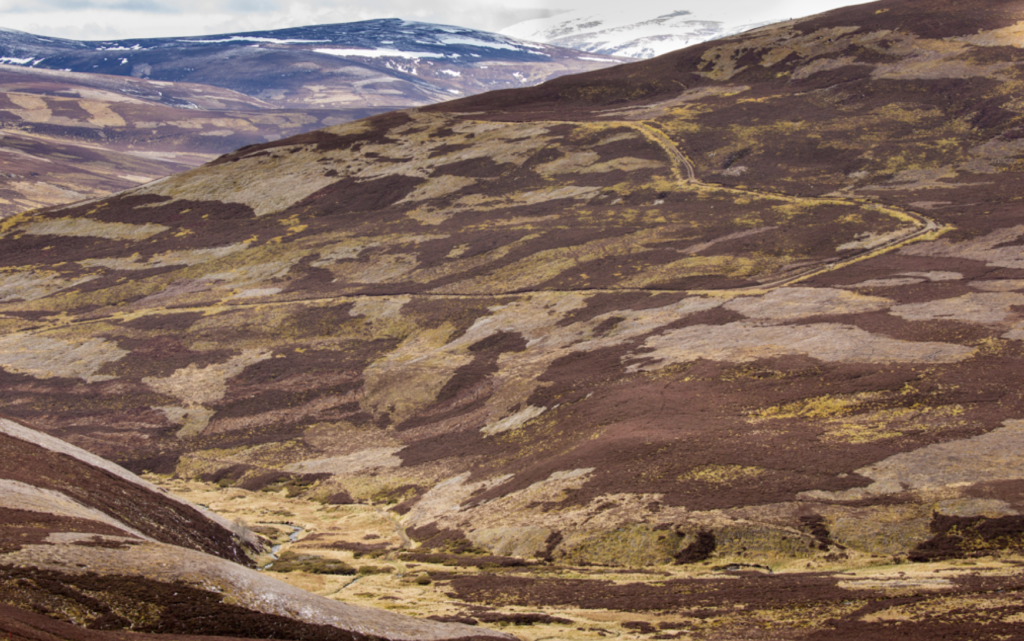
Driven Grouse Shooting is totally underpinned by wildlife crime. Unless Hen Harriers are shot, trapped or poisoned, they breed very well and rise in such numbers on a keepered moor and eat so many red grouse, they make a moor economically unviable and will put a grouse moor out of business. Hence why they have been heavily persecuted.
Isn’t there something called brood management whereby young Hen Harriers are taken from grouse moor and released elsewhere?
Yes…and is a totally ridiculous scheme. It appeases the criminals who have been killing these birds for years. It is a legal way of removing Hen Harriers from the moor. It does nothing to stop Hen Harriers being killed when they fly back over moor, and it does nothing to stop other birds of prey being killed.
Why has brood management been given the go-ahead by Natural England?
Good question. The answer lies in politics, land ownership and weak governance.
So should driven grouse shooting be banned?
Yes. Absolutely. If you haven’t done already please sign here.
So what happens after a ban?
Well, the answer lies in restoration of the wild…rewilding our uplands to ensure a landscape of mixed habitats which will provide greater biodiversity, carbon capture, water and air quality…not to mention our own enjoyment of being in wild places and seeing wonderful wildlife. For some current and future rewilding plans look up Rewilding Britain, Scotland the Big Picture and Revive.
Hen Harrier Day 2019 was an incredible day, bringing together many people who want to bring and end to persecution and the ongoing devastation to our uplands.
The day was organised by the founders of Wild Justice:
Ruth Tingay, Mark Avery and Chris Packham; all fierce defenders of the wild. Wild Justice was founded to fight for wildlife using the legal system and to challenge and change existing laws.
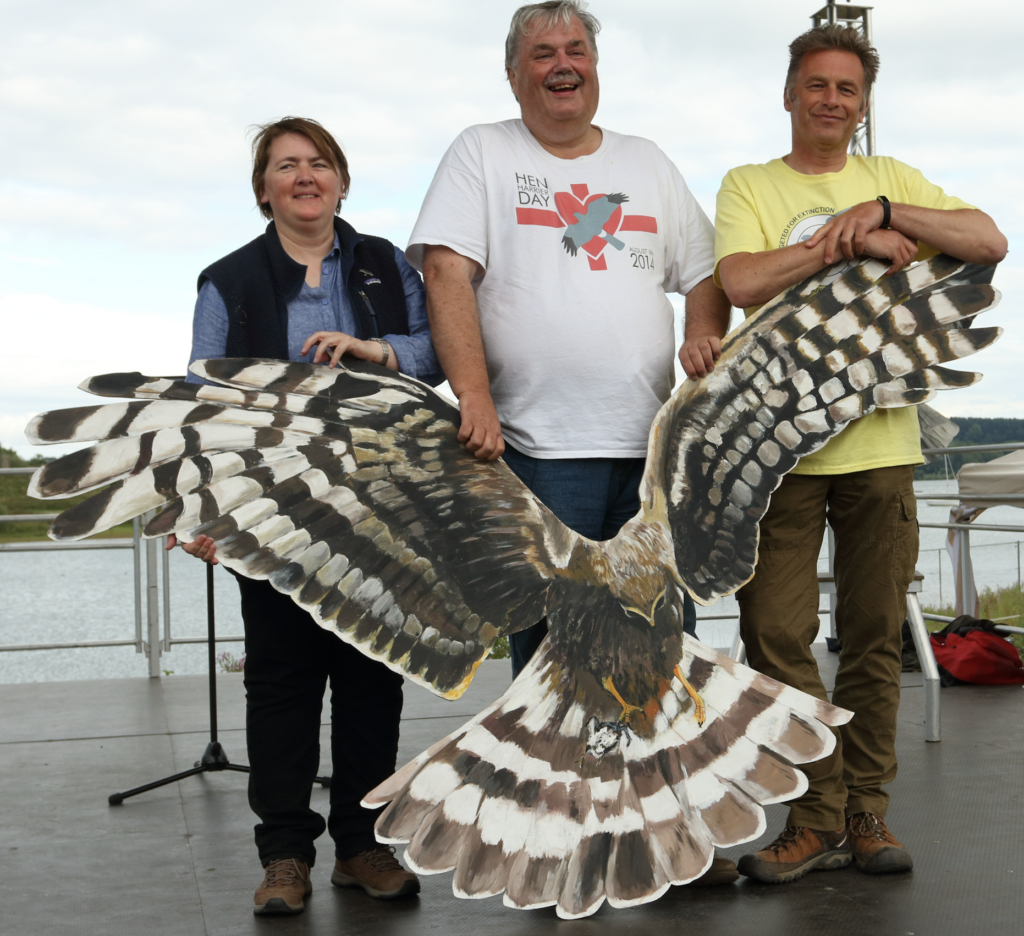
Mark Avery’s book Inglorious is a fantastic read for those who want a deeper insight into the issues, and Mark has been key in bringing this issue into the public consciousness. The groundswell of support has seen this recent petition to ban driven grouse shooting reach over 50,000 signatures in just three days.
Hen Harrier Day 2019 was a day of celebration of the Hen Harrier and also one of voicing concern for these incredible birds.
For me it was also a fantastic chance to meet many fellow Twitter folk in person and make connections with others brought together by this bird.
The highlight of the day was hearing young writers read their poems from an anthology curated by Derbyshire Wildlife Trust. It’s a beautiful and powerful collection of young people’s poems and artwork.
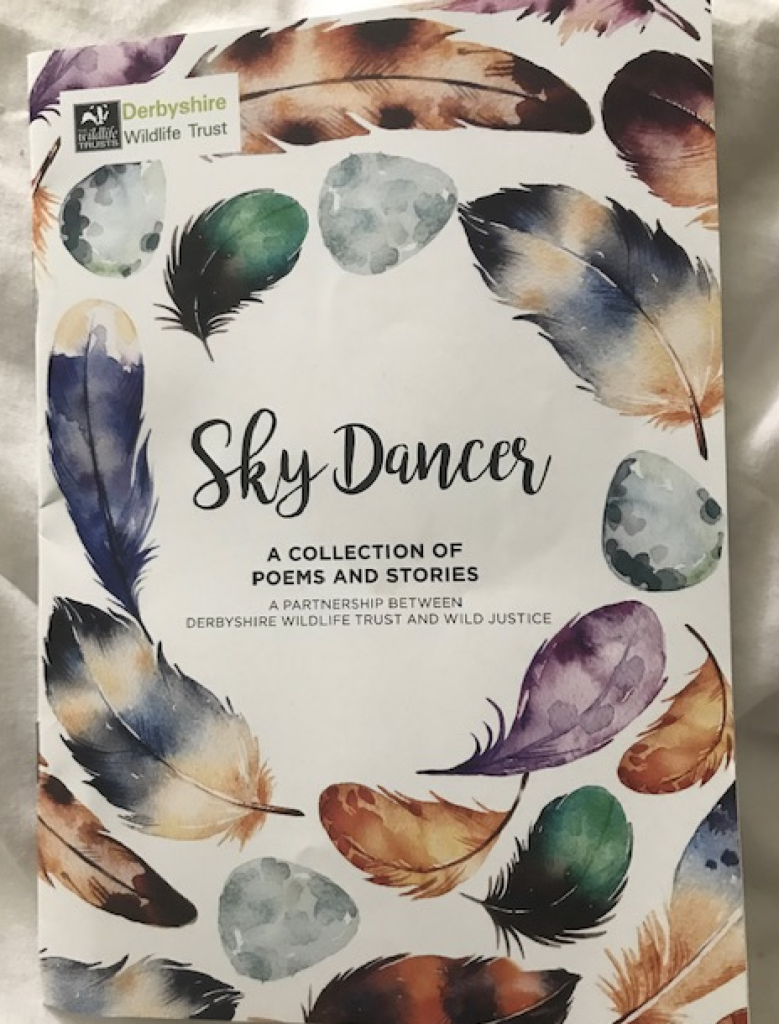
You can buy it here to support Derbyshire Wildlife Trust and Wild Justice. It’s an emotive and powerful plea to save the Hen Harrier.
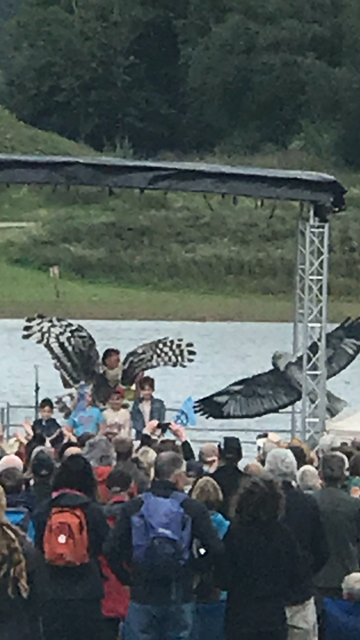
This is Lucy Farrell’s poem about Hen Harriers. I have had the pleasure of meeting Lucy and her family before, and she and her brother held a Hen Harrier day at their school to raise awareness about the issues. Lucy also wrote a poem for a collection of poems and artwork to be sent to Nicola Sturgeon, the First Minister of Scotland to ask for real action to put stop to the killing of Eagles.
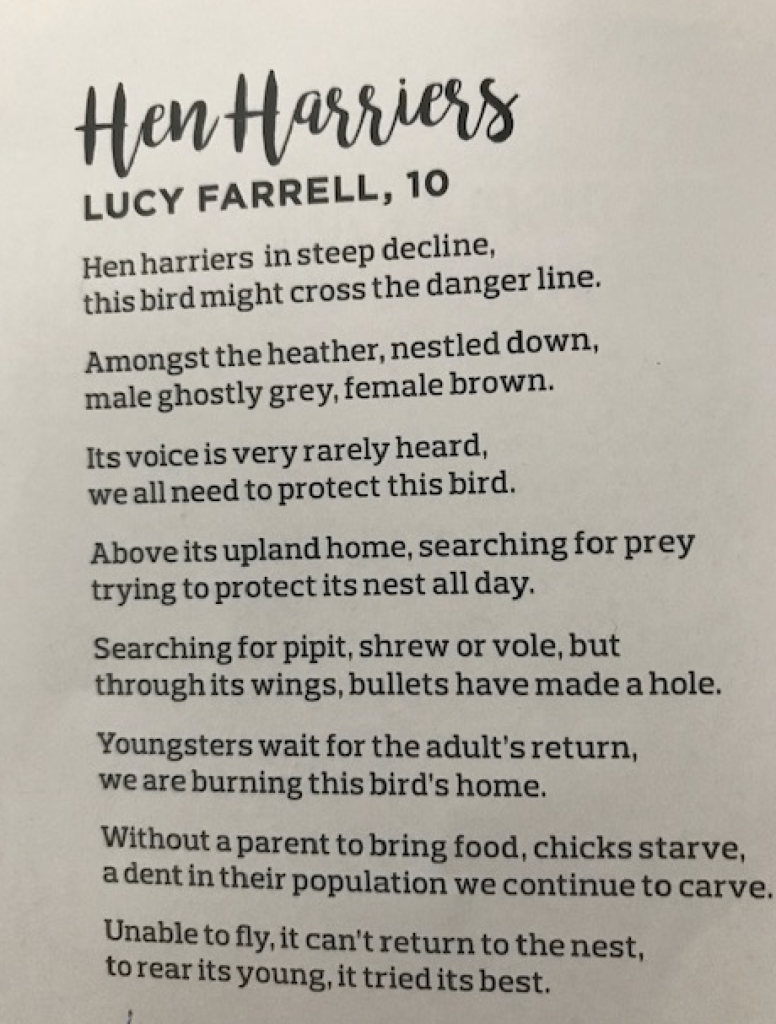
Hen Harrier Day had inspirational speeches by:
Iolo Williams His rousing speech spoke about his sighting of a hen harrier and how much they mean to him and to all of us and the need to protect them.
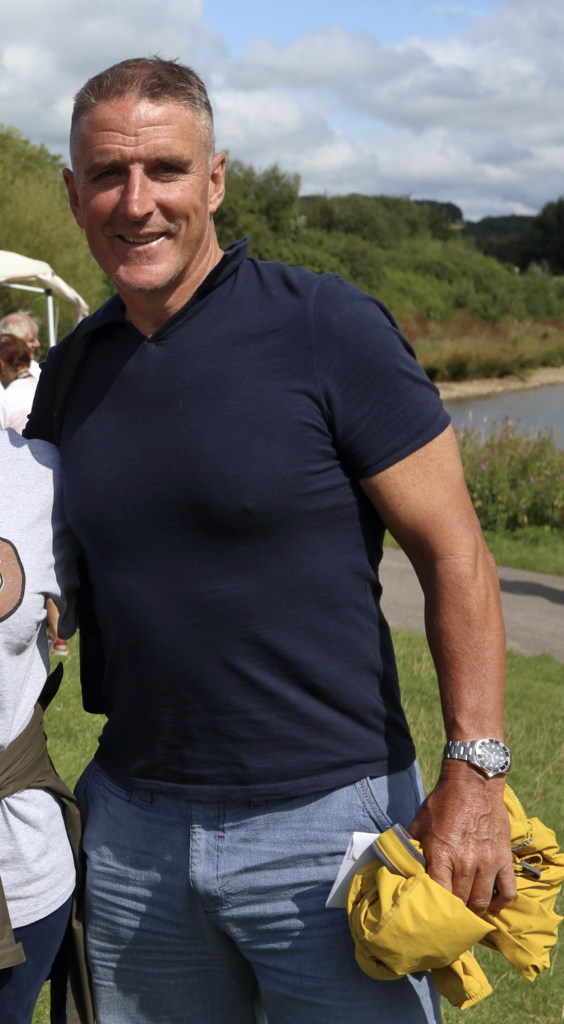
Hardylal Dhindsa (Derbyshire Police and Crime Commissioner) spoke of the urgency to stop these crimes happening on his watch. The Dark Peak area is a known black hole for raptors.
Tim Birch (Head of Living Landscapes, Derbyshire Wildlife Trust) who spoke passionately about the need to restore the wild to the Derbyshire landscape.
Ruth Tingay, Eagle Warrior and defender of the wild, spoke about the continued crimes by the driven grouse shooting industry and how the science and the evidence expose the years of lies. And yet despite this, there is still silence from both the First Minster of Scotland and Westminster about persecution.
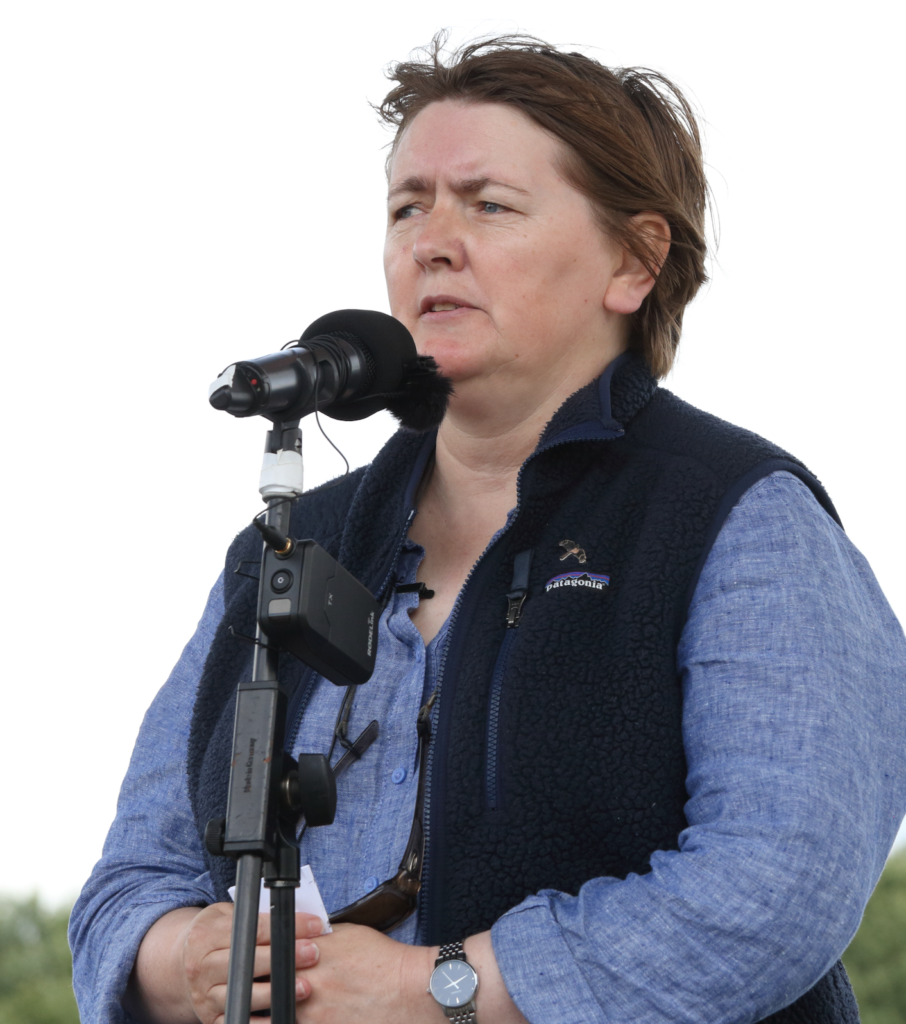
Cathleen Thomas of the RSPB Sky Dancer Project spoke of the frustration of tagging Hen Harrier chicks only to see them ‘disappear’ over grouse moor. Frustration and sadness that turns to anger and determination to save them.
Dan Rouse (Welsh ornithologist and presenter) spoke of the hen harrier situation in Wales and of a combined approach to save these wonderful birds.
Ian Thomson (Head of Investigations RSPB) spoke passionately about the need to stop the continued slaughter of birds of prey and the how those in the driven grouse shooting industry have been getting away with it for years, even evading prosecution despite video evidence of crimes.

Nick Lyall (Superintendent and chair of Raptor Persecution Priority Delivery Group) spoke about his work and the importance of it to ensure the next generation can see hen harriers in our skies.
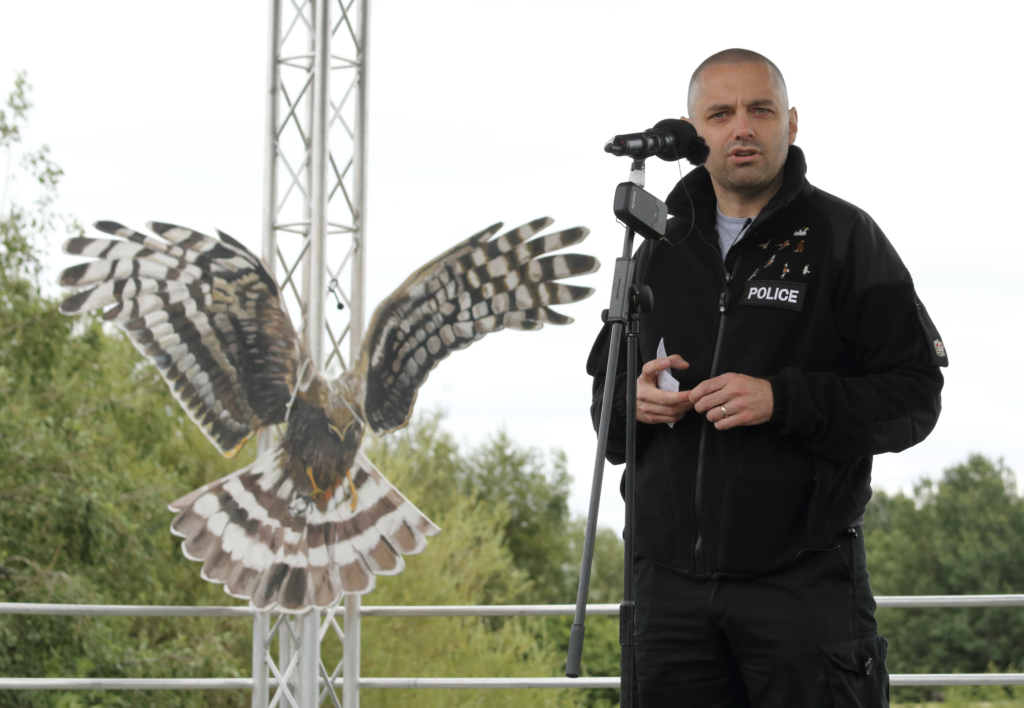
Tessa Gregory (Lawyer at Leigh Day) spoke of her work for Wild Justice and how incensed she became to hear about the illegal persecution and environmental destruction.
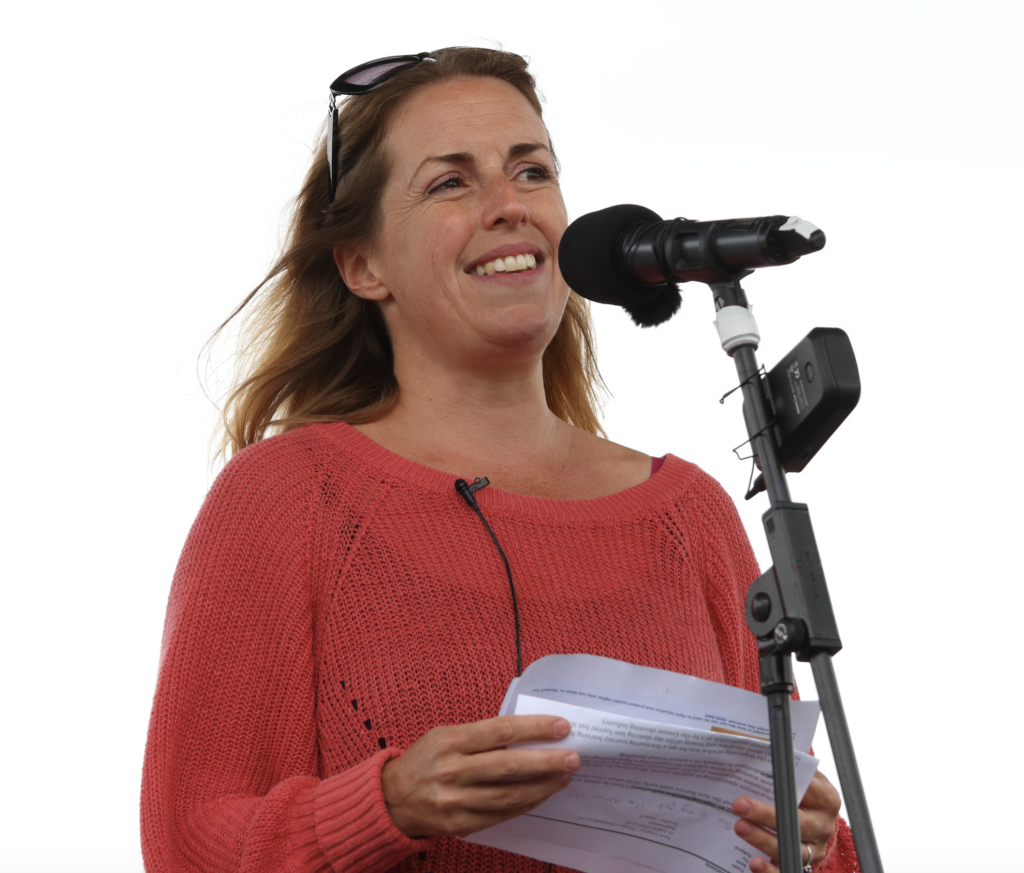
Dom Dyer who gave a thunder and lighting speech about the injustice of the driven grouse shooting issues.
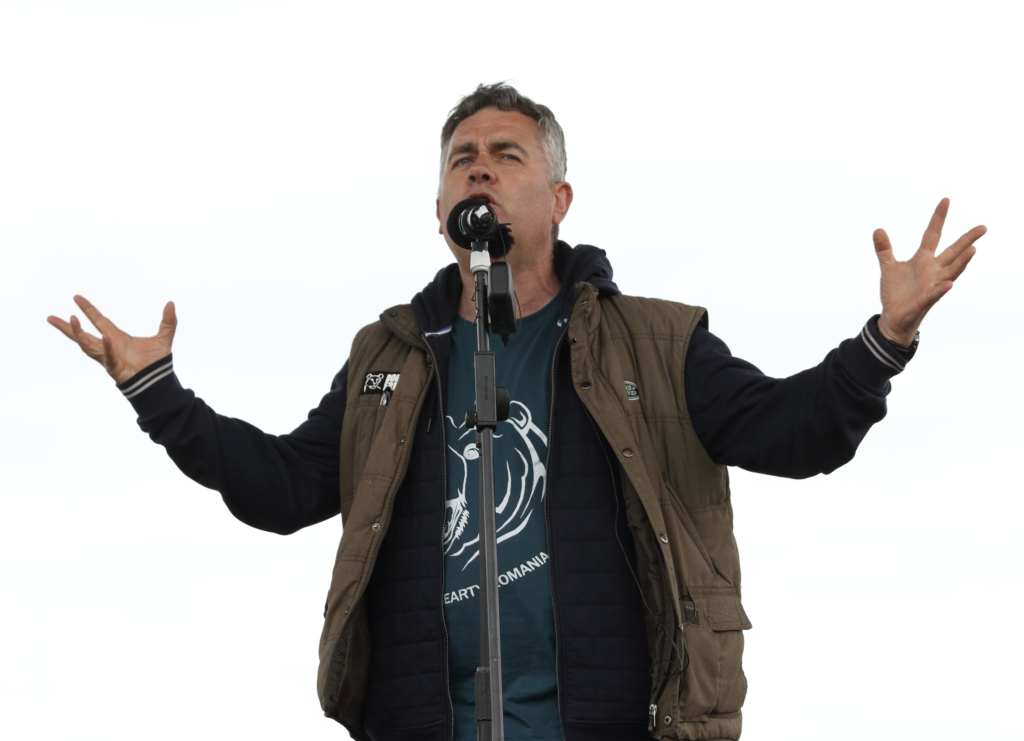
Natalie Bennet who spoke of a time in the near future when we can celebrate the Glorious 12th, not because it is the beginning of the grouse shooting season, but because it will be the first 12th when grouse shooting has been banned.
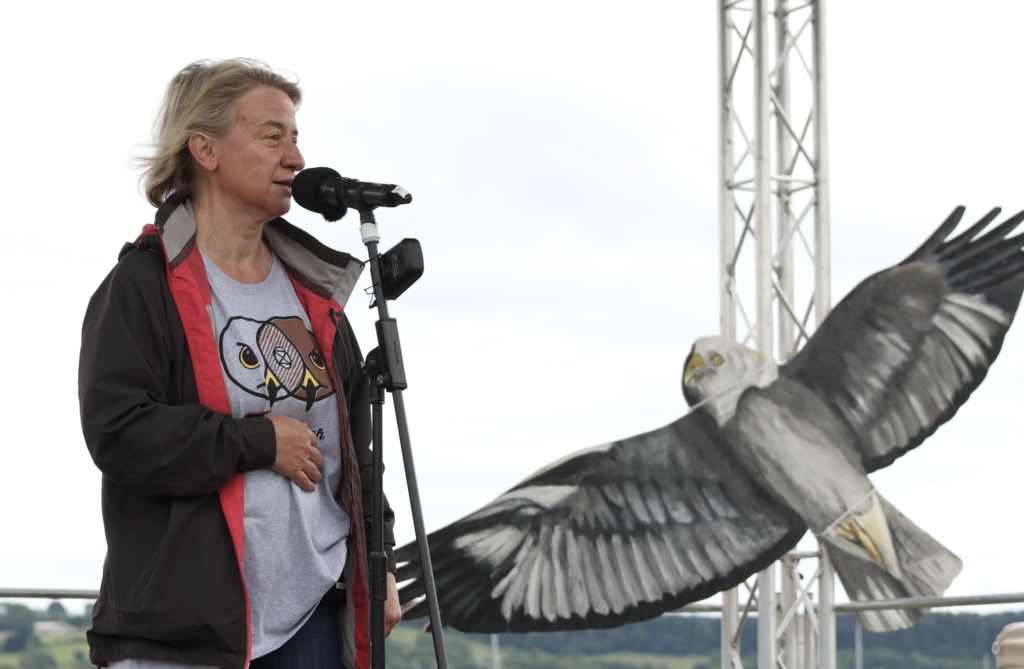
And finally by Chris Packham, who has been an inspiration on this campaign, peacefully, yet determinedly exposing the truth about driven grouse shooting.
In the face of trolls and death threats, he has maintained his humour and integrity. A genuine hero.
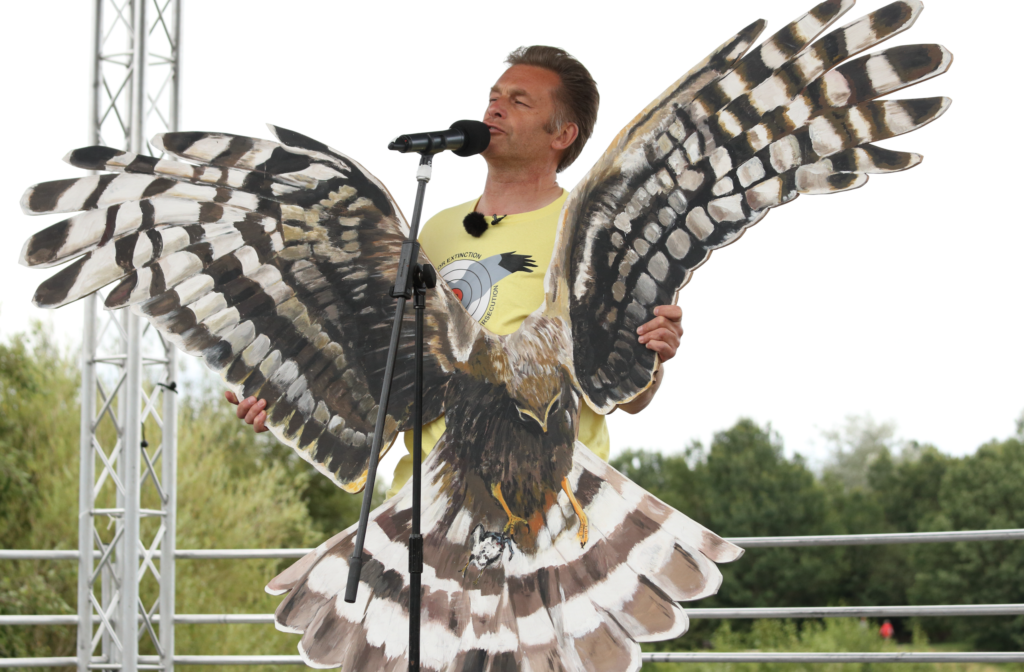
I was really honoured to be asked to speak at this Hen Harrier Day.
I wanted to look back at history and draw parallels between the founders of the RSPB, three women who campaigned to stop the trade in feathers for fashion and between this campaign now. Back in 1891 those three women were told they were silly and sentimental and that they were wrong, that the natural world was there for the taking. They were told they were dangerous activists and fanatics. And they were told to shut up. But they won because they didn’t stay silent. They exposed the lies, they won hearts and minds and because they never gave up.
And now in 2019, in the middle of this campaign to ban driven grouse shooting, Mark Avery, Ruth Tingay and Chris Packham, have exposed the lies of the grouse shooting industry with truth. They have won hearts and minds of people incensed at the persecution and environmental damage. And they will not give up, and neither should we.
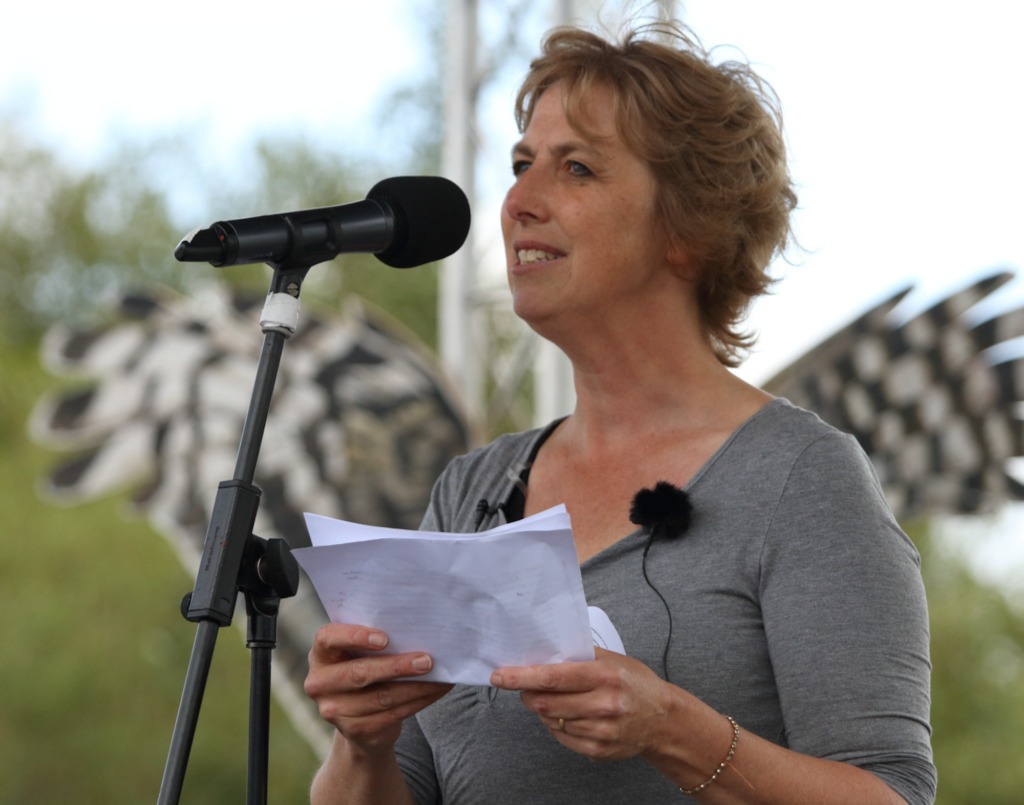
Because driven grouse shooting is theft;
To shoot a hen harrier is the theft of a life
To burn a moor is theft of a landscape and deprive it of habitats that could be rich in biodiversity.
To continue driven grouse shooting is theft of the future, for future generations to have the chance to see these magnificent birds in truly wild landscapes.
Please sign the petition and add your voice.
These issues inspired me to write Sky Dancer, a book set on a fictional estate in the Dark Peak area. The story follows Joe, a gamekeeper’s son. I wanted the story to look at both sides of the argument and understand both points of view. But when a Hen Harrier is shot, Joe is faced by having to make a decision of doing what is right, over what is seen as traditional. It’s a decision that will drive his family and community apart.
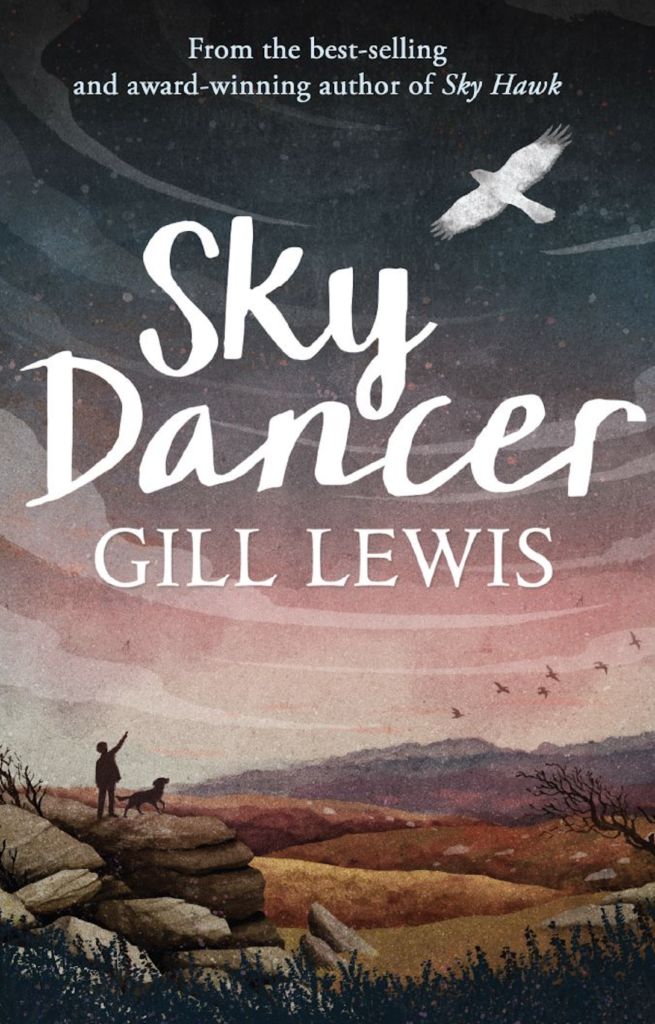
And after hearing about the disappearance of an eagle named Fred, and also reading the Scottish Natural Heritage Eagle Report, I wrote another book on this issue, called Eagle Warrior about a girl who discovers that an eagle is threatened on her Scottish farm.
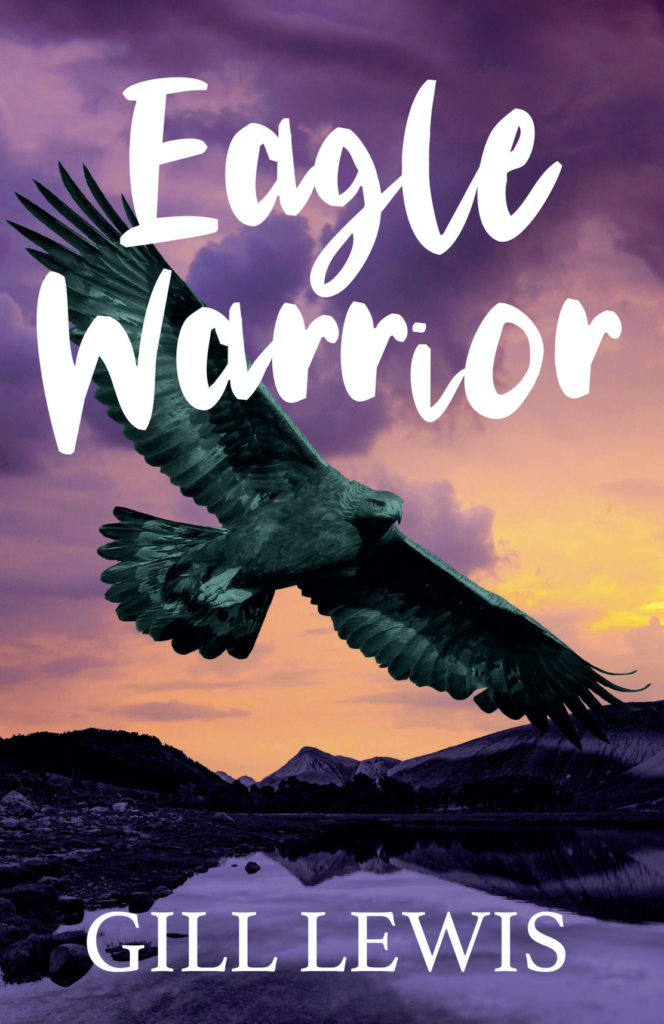
I’ll to be sharing the stage with Ruth Tingay at Edinburgh International Book Festival on the 23rd August 2019 at 15.45.. to talk about eagles, books and what we can do to stop persecution. Please do come and add your voice for the eagles.